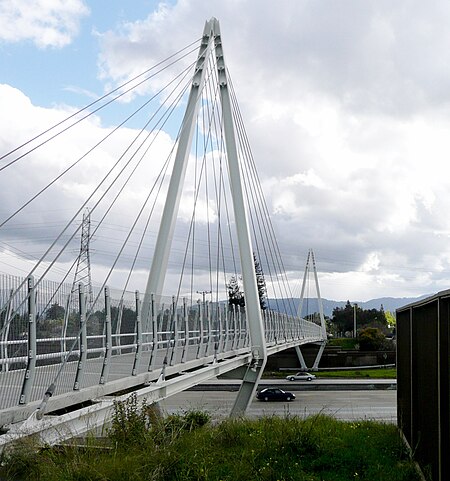Don Burnett Bicycle-Pedestrian Bridge
Bridges completed in 2008Bridges in the San Francisco Bay AreaCable-stayed bridges in the United StatesCalifornia building and structure stubsCalifornia transportation stubs ... and 6 more
Cupertino, CaliforniaPedestrian bridges in CaliforniaSanta Clara County, California building and structure stubsSteel bridges in the United StatesTransportation buildings and structures in Santa Clara County, CaliforniaWestern United States bridge (structure) stubs

The Don Burnett Bicycle-Pedestrian Bridge, renamed from Mary Avenue Bridge on July 19, 2011, is a cable-stayed bridge over Interstate 280 (California), spanning Cupertino, California and Sunnyvale, California, used for bicycle and pedestrian traffic. It is the only cable-stayed pedestrian bridge over a highway in California. At night the bridge is lit up and can be seen by those driving on or crossing Interstate 280. The project was awarded a Helen Putnam Award of Excellence. It also won the California Transportation Foundation's Pedestrian/Bicycle Project of the Year.
Excerpt from the Wikipedia article Don Burnett Bicycle-Pedestrian Bridge (License: CC BY-SA 3.0, Authors, Images).Don Burnett Bicycle-Pedestrian Bridge
Junipero Serra Freeway, Sunnyvale
Geographical coordinates (GPS) Address Nearby Places Show on map
Geographical coordinates (GPS)
| Latitude | Longitude |
|---|---|
| N 37.333388888889 ° | E -122.05055555556 ° |
Address
Junipero Serra Freeway
Junipero Serra Freeway
94087 Sunnyvale
California, United States
Open on Google Maps









